 "Berang" (berang)
"Berang" (berang)
05/27/2015 at 23:43 ē Filed to: mid engine, MR layout, cadillac, ford, rambler, antique cars
 19
19
 76
76
 "Berang" (berang)
"Berang" (berang)
05/27/2015 at 23:43 ē Filed to: mid engine, MR layout, cadillac, ford, rambler, antique cars |  19 19
|  76 76 |
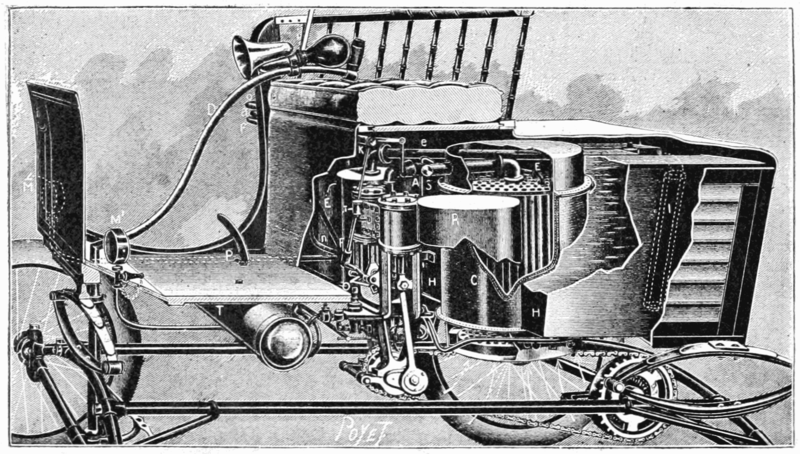
Some ideas about how to build cars are so good theyíre obvious from the start.
Hereís an interesting thing about cars built in the U.S. before 1910. Almost all of them were mid engined. Which when you think about it from an engineering perspective - putting the engine in the middle of the chassis makes the most sense. The first Ford of 1903 had a mid located, transversely mounted engine. As did the first Cadillac. And the first Oldsmobile. And the first Buick. And the Reo, and the Waterless Knox too!
Le SystŤme Panhard hadnít gained traction yet in the U.S. - mounting the engine longitudinally at the front of the chassis was a mechanically perverse idea, the many advantages of which werenít immediately apparent until cars and engines became much larger. Mounting the engine transversely in the middle of the car allowed for the the simplest, and most efficient transmission of power with the technology available at the time (drive shafts and bevel gears were - and still are - less efficient than a chain). Important stuff when most cars had under 10hp. Itís relatively easy to lay a large single or twin down horizontally under the floor boards - which is what most of these early American cars did, but when you get to four or more cylinders you run out of space.
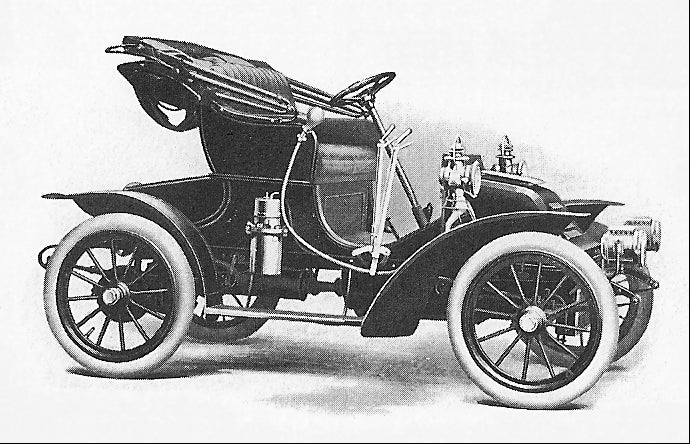
Autocar, a redundantly named company that would go on to build some really scary trucks, was one of the first American companies to adopt shaft drive and a longitudinally mounted engine up front, although when this one was made engines were still relatively compact two cylinder units. Amongst cheaper cars like the R.E.O., the mid mounted engine persisted until the end of the first decade of last century. Fordís popular model T helped convince manufacturers where to stick their engines. Up until that point, mid engined cars ruled the market place. Oldsmobile produced over 19,000 mid engined curved dash runabouts. You donít generally think of ďmid engined carĒ and ďOldsmobileĒ in the same sentence, but at one point they were the largest producers of such machines in the world.
In fact, odd as it may seem today, the mid engine layout was used predominantly by cheap, slow, economical cars up until relatively recently. After 1910 the layout had basically fallen out of favor for road going cars, only occasionally popping up in such freakish cars as the Heinkel bubble car or the Japanese Cony 360 light van (where the horizontally opposed air-cooled engine lived under the driverís seat, as it did on the Waterless Knox made six decades earlier). Although mid engines remained popular for racing cars, they didnít really gain their sporty connotations until Lamborghini and Ferrari picked up the layout for road going cars in the 1960s. At which point sticking the engine in the middle of the car became ďrevolutionaryĒ. But of course it was an idea the merits of which were obvious from the beginning.
One more advantage of the mid engine layout is ably demonstrated by this 1903 Rambler: you can crank the engine from the driverís seat.
 Bytemite
> Berang
Bytemite
> Berang
05/28/2015 at 01:47 |
|
We all understand why we dont stick engines in the middle anymore in passenger carsbut there is something that bugs me. Although front engine design does allow more cabin room, what I donít understand is why not go rear engine? Same cabin room as front engine but with better balance for braking, accelerating, and turning. I cant help but wonder cars in the 80s could have just as easily adopted RR as the new norm and weíd all be driving well balanced cars today.
 Berang
> Bytemite
Berang
> Bytemite
05/28/2015 at 01:52 |
|
Engineering a rear engined car that handles well with over 120hp or so is difficult. On the other hand itís cheaper to make a rear engined car than any other layout, one wonders why there arenít more rear engined econoboxes, which would be the best use of the layout in terms of packaging and production costs. But the answer to that is probably that companies have so much invested in production lines for front engined cars making anything else would require re-engineering the the production lines, retraining the workers, etc.
 Bytemite
> Berang
Bytemite
> Berang
05/28/2015 at 02:14 |
|
I donít believe that actually. If an inherently terrible design like front-engine-front-drive can work, then RR can work better. In FWD, the front axle is handling 2x the weight of the rear axle, (66-33 FR weight distribution is normal for FF cars). All the static load on the axle that needs to do most of the turning and braking normally, and now has to also accelerate the car, needs to handle all the dynamic load to the already heavily loaded axle when turning and braking. Not to mention the dynamic load is completely counterproductive to acceleration when moving forward.
If ABS, traction control, and open differentials can keep the drivers from getting into trouble with FF, it can do the same thing for RR. It should even be cheaper to manufacture because of the simpler joints. I think the CV joint of front wheel drive is a marvel.
 Berang
> Bytemite
Berang
> Bytemite
05/28/2015 at 02:39 |
|
With todayís stability control systems it is probably a lot easier to make a rear engine car manageable. But it may just be that engine power quickly outgrew the limits of available technology during the 1980s and 1990s - so even though the tech exists now to make a perfectly safe handling RR family sedan, manufacturers see no reason to. If you look at RR Porsches as they evolved they had to resort to methods that just arenít practical for commuters/family cars, such as fitting much wider wheels at the back than the front (of course back then most cars still had full sized spares, today I donít think companies would care as much about something like that).
But a lot of companies are super reserved about stuff like that. Many companies resisted FF because they didnít want to invest in rejiggering their assembly lines for it - rather than for any other technical concerns. I would think though that a factory set up to put transverse engines in the front of a car, could easily be set up to put transverse engines in the rear of a car. Which is a much simpler task than converting a factory from producing FR cars to FF cars.
 Leon711
> Berang
Leon711
> Berang
05/28/2015 at 03:32 |
|
Weíll see what RenaultSport does with this.....
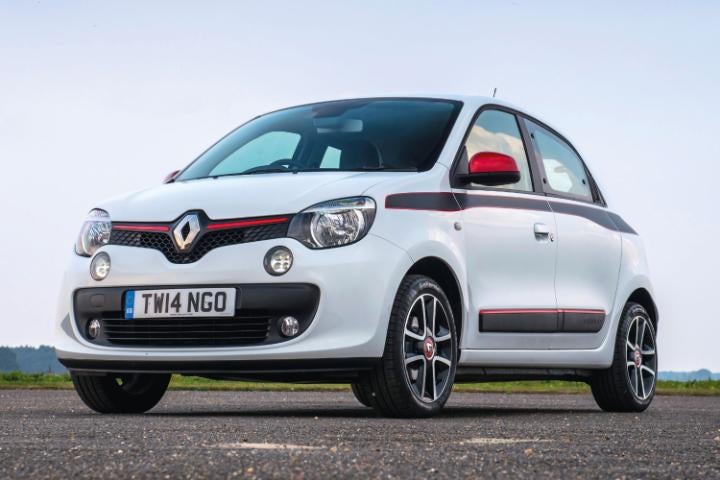
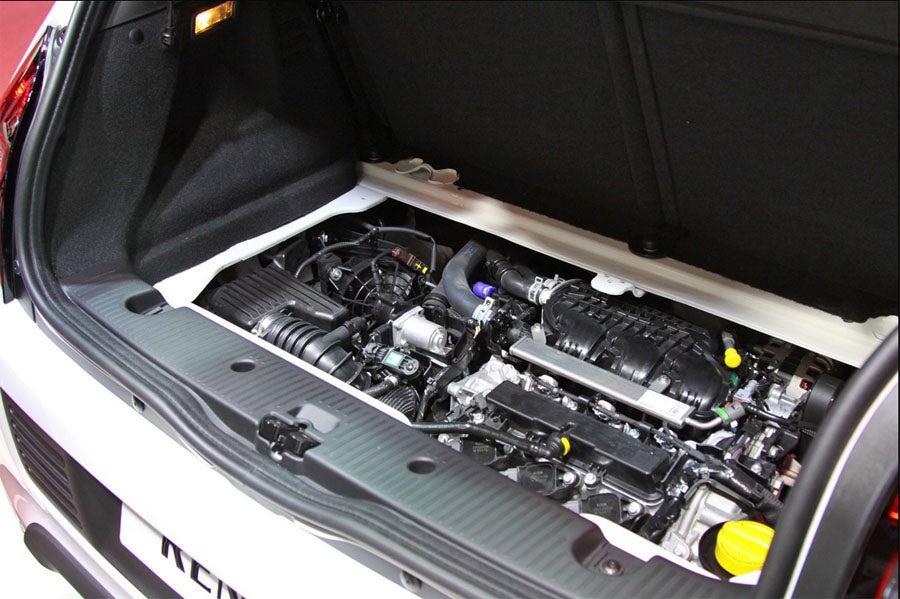
Most powerful is a 0.9 turbo 3 with 90hp but RenaultSport is known for slightly mental cars.
 Bytemite
> Berang
Bytemite
> Berang
05/28/2015 at 03:33 |
|
Well at least Tesla went with RR. Hopefully when electric cars dominate the market, they will follow the RR set-up and weíll never look back. Maybe once in a while to wonder how people thought for 50+ years that using one set of wheels to do everything while the other set rolls along made any engineering sense.
 Leon711
> Bytemite
Leon711
> Bytemite
05/28/2015 at 03:35 |
|
I love that RR economy cars are back (in europe)
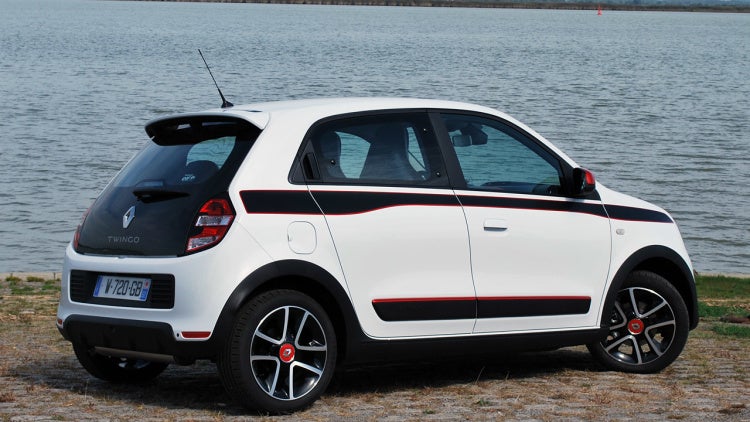
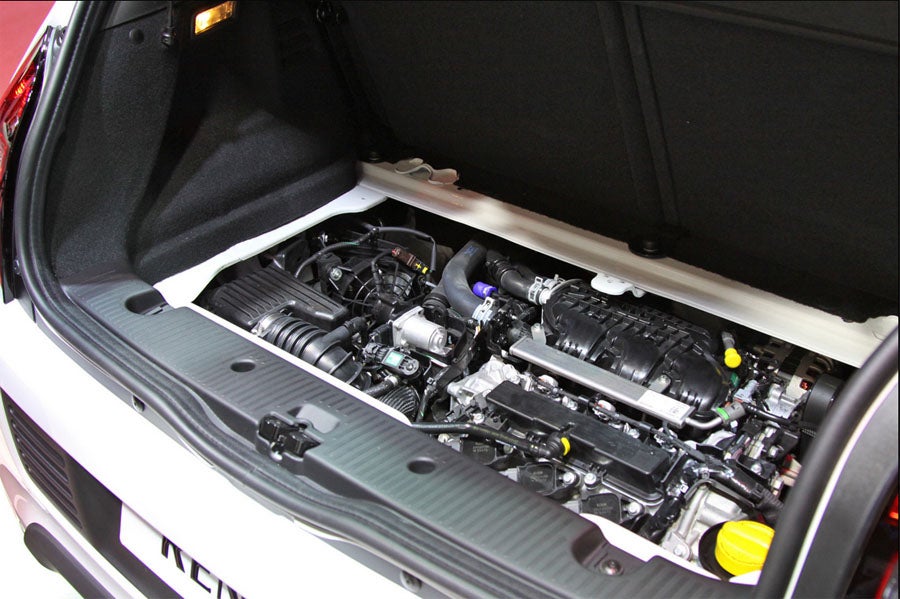
Look at how close the dash is to the windshield!
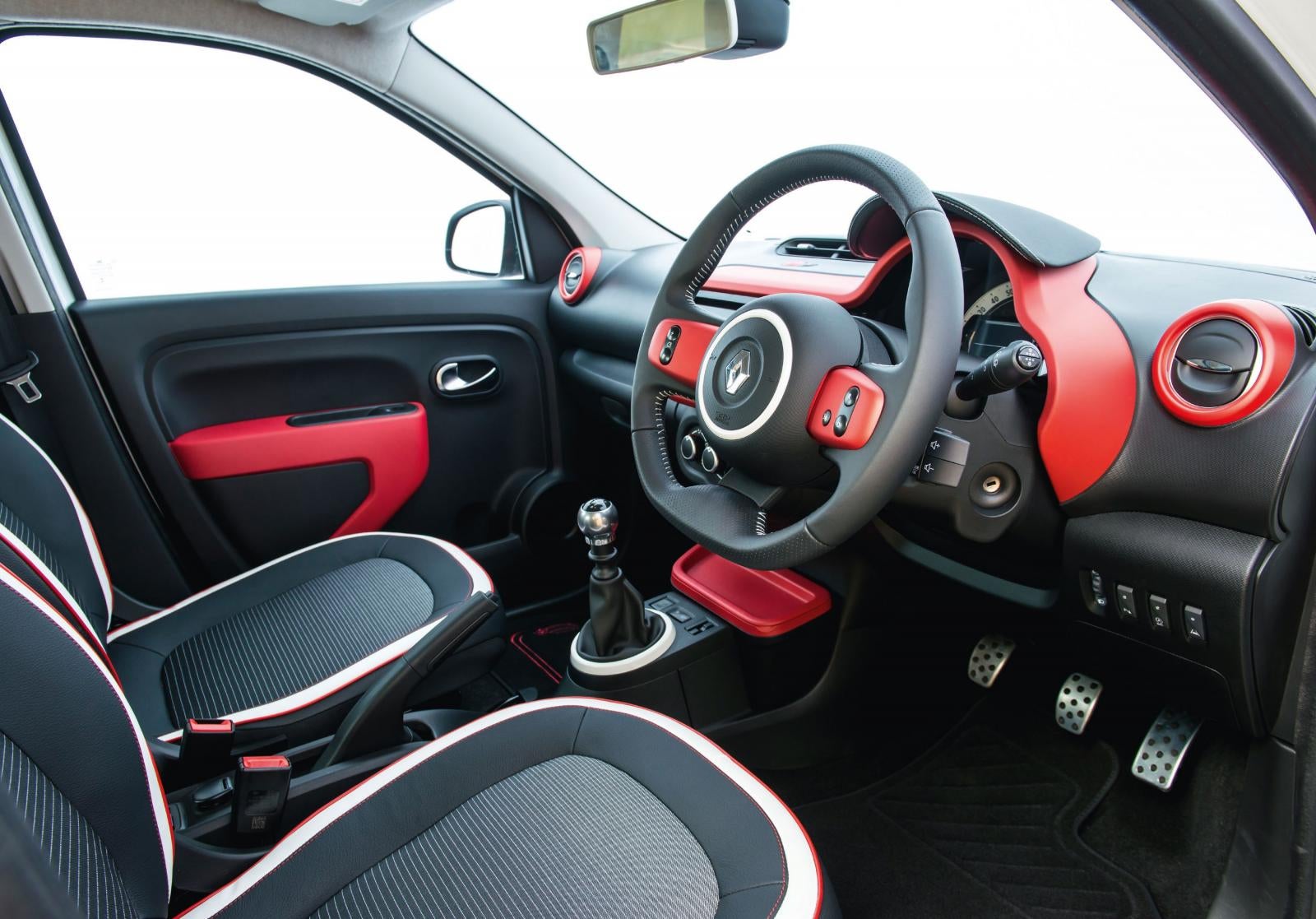
 Berang
> Bytemite
Berang
> Bytemite
05/28/2015 at 04:00 |
|
FF made a lot of sense when engines were small, tires were skinny, and roads were bad. Having the steering wheels also pull the car works miracles compared to FR when that is what youíre working with. Thatís not even getting into the packaging, production logistics, etc. Thatís why SAAB, Citroen, Mini, DKW etc. dominated rallies around the world for a couple of decades. But tires are better now, roads are better now (well in a lot of places anyway), and engines are better now - not to mention everything else thatís also gotten better.
 Berang
> Leon711
Berang
> Leon711
05/28/2015 at 04:03 |
|
I wonder how much engine can fit back there. Iím sure with 90hp it must already perform decently for such a small car.
 Bytemite
> Berang
Bytemite
> Berang
05/28/2015 at 04:07 |
|
We can both imagine the insane Renaultsport version sticking a bigger engine in there and taking up the whole back seat. It is not even as much of a drastic change as their last insane sport version.
 Leon711
> Berang
Leon711
> Berang
05/28/2015 at 04:12 |
|
10.8 to 60, 103 mph top end. 55/45 weight distribution.
Iíd guess they would up the power of the turbo 3.
 BloodlessWeevil
> Bytemite
BloodlessWeevil
> Bytemite
05/28/2015 at 08:18 |
|
The front engine layout came about for cooling reasons. As engines became larger and more powerful it was difficult for designers to get enough airflow to cool them properly in the middle or rear of the vehicle.
Iíll play devils advocate. Front wheel drive is a good solution for most passenger vehicles. More weight on the front gives more traction for steering the car and on the primary braking wheels. Sure, you might be able to get to the same traction in a balanced vehicle, but you have to wait for the moment to develop to put that force on the front end (this is commonly referred to as weight transfer, though that is technically inaccurate.) This is something that the vast majority of drivers do not understand, and could not apply in an emergency.
Now for accelerating. All the same forces apply. Yes, it is actually better for putting power down in the vast majority of situations that will be encountered on public roads. There is more traction available on tip in (before the moment develops.) Yes, you loose some of that traction as the front lifts, but you start out with more from the front biased weight distribution.
ďBut I have to split traction between steering and putting power down.Ē Yes, voice inside my head, you will have trouble powering out of the apex when you are at the limit. Not a problem since you would have to be doing highway speeds on tight back roads, which is incredibly dangerous and I know you would never do that on public roads.
 BigBlock440
> Bytemite
BigBlock440
> Bytemite
05/28/2015 at 08:22 |
|
What makes a RR layout any better than a FF? FF layout has almost exactly the same packaging as a RR layout would, just with the weight over the tires that actually control the car. Move the weight to the back, you take weight/traction off of the wheels that do the turning and most of the breaking. Itís also much harder to get yourself into trouble with the wheels pulling you out of a slide/turn/etc than with them pushing. The only advantage to hanging all that weight behind the rear axle is that it would be easier making a steering system.
 Bytemite
> BloodlessWeevil
Bytemite
> BloodlessWeevil
05/28/2015 at 14:42 |
|
Well for the braking and turning part, majority of drivers on the road like to trailbrake already so they would be transferring weight onto the front in RR. They brake with all 4 wheels more evenly, decreasing braking distance and increasing safety (yay safety?) As for accelerating, RR would have the same static weight advantage, and be better off once you start moving.
 Bytemite
> BigBlock440
Bytemite
> BigBlock440
05/28/2015 at 14:46 |
|
Static weight yes. Not in the actual situations where you want the traction while braking and turning. In slow pedestrian driving, traction is not an issue. In performance or emergency driving, turning and braking loads the front wheels to give the traction you need. Instead of overloading them like FF does. I know you are just playing devils advocate but there is a reason why all uncompromising performance cars have rear weight bias.
 BloodlessWeevil
> Bytemite
BloodlessWeevil
> Bytemite
05/28/2015 at 15:02 |
|
They like to trailbrake, but they also like to slam on the brakes as hard as they can in an emergency (safety?) How often do you think the average motorist practices emergency stops? Why do you think braking more evenly will decrease braking distance? It will only help if the FF alternative is not using all the traction available while the RR is.
Hmm... I guess your right about the acceleration. However, you would need a rear weight bias equivalent to the FFs front bias. Which impacts the traction available for steering.
 Bytemite
> BloodlessWeevil
Bytemite
> BloodlessWeevil
05/28/2015 at 16:33 |
|
Even distribution of load will decrease braking distance because in FF, the rear wheels are barely using any of the traction the tires can provide, all wwhile the front has to limit the amount of braking due to overload of the front tires. Again, steering in any situation moving forward will shift weight to the front, regardless of drivetraain layout. You dont have to worry about that.
 BloodlessWeevil
> Bytemite
BloodlessWeevil
> Bytemite
05/29/2015 at 07:14 |
|
You are assuming the FF is not using all available traction to brake. Why does that assumption not hold true for RR as well?
Of course if you design a car poorly it will be worse than one that is designed well. I can go the other way as well. If the RR is not using all of the traction available for braking the FF will clearly be superior in that area.
If steering alone is moving weight to the front, you are doing it wrong. I donít even know how you could do it without also braking, and I do worry about it. Understeer is not something to be taken lightly.
 Bytemite
> BloodlessWeevil
Bytemite
> BloodlessWeevil
05/29/2015 at 13:24 |
|
Are you trolling? I cant be sure. If you think moving forward and turning is not going to shift weight forward then you need to brush up on the basics. If you also think an FF design makes use of the traction available in all 4 tires the same way RR does, then you also need to brush up on basics. An RR design will load 4 tires under braking maybe 60/40 fr at medium loads generally speaking. An FF is more like 85/15 fr. You think that the rear wheels with the 15% of body weight under braking is able to get the most out of its tires? You can test this yourself if you own an FF. Hard brake and the rear wheels will be skidding along, while the front tries desperately not to lock up using ABS. Just try it and you ll learn. These arent assumptions, these are basic automotive design flaws and features.
 BloodlessWeevil
> Bytemite
BloodlessWeevil
> Bytemite
05/29/2015 at 14:17 |
|
Right back at you buddy. Turning results in lateral transfer, not longitudinal transfer. What are these ďbasicsĒ you keep referring too? These are only basic concepts for a very small population of engineers and designers.
Yes, the rear brakes can get the braking force corresponding to whatever weight is on the tires, whether that is 85% or 15%. It sums to 100% regardless (if you ignore some complications that come with friction in non-rigid bodies, but it is a good enough approximation for our purposes.) They can get exactly that much braking force out of them before they lock up. It kinda sounds like you forgot that designers will adjust braking force to suit the traction and weight distribution of the car.
Imagine that 60/40 (total weight is 1000, just to make the math easier in our heads) RR vehicle goes to stop. In doing so it will cause a moment that results in 200 being lifted off the rear, and 200 coming down on the front. The brakes will be biased the same way as the weight after the moment develops (to minimize stopping distance,) until then you can only use a two thirds of the braking power of the car (it will be a gradient actually, but you start at two thirds.) You cannot adjust the bias on the fly, so if you are limted to two thirds on the front you are similarly limited on the rear no matter how much traction those wheels actually have at that point.
Now imagine the FF vehicle with the bias reversed. After the moment develops you are at 20/80, as opposed to 40/60 before. You have three quarters of the braking power available immediately.
 Bytemite
> BloodlessWeevil
Bytemite
> BloodlessWeevil
05/29/2015 at 16:14 |
|
Lateral transfer but still biased to the front outside wheel. You are moving forward remember? This is basics, no engineering terms. Any kid who has ridden a bicycle would know somewhat that weight tranfer is occurring.
Yes you can make your brakes biased and have larger rotors and more pistons and all that but in the end, you are fighting physics. More weight anywhere, front or rear, is bad for braking distance. But you would rather have it in the back than the front.
40/60 static distribution of RR turns to 60/40 under braking. The amount of braking force is limited by how much your tires can handle before either lock up, or abs keeps them from reaching lock. With similar traction for all 4 tires, this moment of lock up is reached more closely together.
65/35 static of FF turns to 85/15 under braking. the amount of braking force you can apply is now limited to the tires with 85% of weight on them. The brakes can be biased all they want. And although the front will have more traction due to the weight, you lose more traction at the back than you will ever gain by pushing in the front. The back will be lifted and have reached the maximum braking force it can apply to the ground way before the RR car will reach the limit of the 60% weighted front.
I just dont feel like theres any point arguing. If you want proof, just look how performance cars are set up. They are not going to bias the front and weigh it down because it brakes equally as well as a rear biased car...it obviously doesnt.
 me
> Bytemite
me
> Bytemite
05/29/2015 at 19:50 |
|
The problem, or at least part of it, would be boot space. Most cars are hatchbacks these days, and having the engine in the back gets in the way; it increases the tailgate height, and shrinks the boot space. While you can have a frunk, spliting the boot space between two areas makes life kind of awkward.
That said, Rear engine, RWD is coming back a bit, with things like the new twingo. Itíll be interesting to see how that goes.
 BigBlock440
> Bytemite
BigBlock440
> Bytemite
05/29/2015 at 20:25 |
|
Yes you can make your brakes biased and have larger rotors and more pistons and all that but in the end, you are fighting physics. More weight anywhere, front or rear, is bad for braking distance. But you would rather have it in the back than the front.
Not entirely true. There are a few test done where a pickup truck with weight in the bed (1,000 lbs in the most recent I read) stopped a few feet shorter than one empty. What that says about your point about a RR, Iím not sure because pickups are notoriously front biased and Iím not sure youíd get the same results throwing a couple hundred lbs in the trunk of a sedan.
 theWong
> Bytemite
theWong
> Bytemite
05/29/2015 at 20:30 |
|
Alas, I too do agree itís packaging. A FWD transverse engine, gives you more storage and rear passenger seating, whereas a mid-engine layout nets you none of those. And a very small compartment up front, if any at all. Rear- engine layout like a modern 911, does give you some rear passenger seating, but doing any engine work is a big pain w its tight packaging. And their crazy handling w/o electronic aids and sticky tires.
 lonestranger
> Bytemite
lonestranger
> Bytemite
05/29/2015 at 20:31 |
|
LOLWUT
Teslas are purely electric. They have no engine, so youíre comparing apples to oranges. Yes, their motor(s) are located near the drive axle(s), but the motor is relatively light compared to both an IC engine and the battery pack.
 TommyRocker
> Bytemite
TommyRocker
> Bytemite
05/29/2015 at 20:53 |
|
FF is inherently more stable than RR. Most people who buy econoboxes prefer the advantages of FF to the advantages of RR. Snap oversteer is a hell of a thing, especially for the uninitiated...
 Wave Motion Gun
> Berang
Wave Motion Gun
> Berang
05/29/2015 at 20:53 |
|
Denton: Give Berang a job already. Heís got it.
 matt.mara
> Berang
matt.mara
> Berang
05/29/2015 at 21:00 |
|
Ahem...

(Sorry; I had to post that.)
 neverspeakawordagain
> Berang
neverspeakawordagain
> Berang
05/29/2015 at 21:07 |
|
Maybe Iím missing something here, but... when engines were moved to the front of the car, why didnít they go with front-wheel drive? Is it really that much harder to chain-drive the front axle while dealing with the steering system then to set up an entire separate driveshaft assembly and transmission?
 neverspeakawordagain
> Berang
neverspeakawordagain
> Berang
05/29/2015 at 21:08 |
|
Everyone always forgets that the Smart is rear-engined.
 cream wobbly
> Berang
cream wobbly
> Berang
05/29/2015 at 21:36 |
|
See, this here:
Mounting the engine transversely in the middle of the car allowed for the the simplest, and most efficient transmission of power with the technology available at the time (drive shafts and bevel gears were - and still are - less efficient than a chain). Important stuff when most cars had under 10hp.
So if it was efficient back then for a tiny 10 HP motor, then it cannot be inefficient today for a ~250 HP motor. Maybe the loss of FF versus MR, and FR versus MR, have lessened over the intervening century and a bit, what with ball races superseding oil-infused brass bearings, better lubricants, better cooling and heat-dissipating materials and so forth, but a simpler layout is easier to manufacture.
Hm. More transverse MR two seaters please. Toyota, Lotus. And get the damned price down! Maybe the S. Koreans will do one when theyíre readyÖ hereís hoping.
 cream wobbly
> Bytemite
cream wobbly
> Bytemite
05/29/2015 at 21:37 |
|
raises hand
No, we donít all understand. Thereís plenty of room for a small, high output motor under the rear seats of SUVs and minivans.
 skipstheboss2
> neverspeakawordagain
skipstheboss2
> neverspeakawordagain
05/29/2015 at 21:51 |
|
Making the front wheels pull and steer is very complex
 skipstheboss2
> Bytemite
skipstheboss2
> Bytemite
05/29/2015 at 21:54 |
|
Only if those engines were super compact and air cooled with few accessories attached. Otherwise it's too heavy to do safely.
 liffie420
> Bytemite
liffie420
> Bytemite
05/29/2015 at 21:56 |
|
I believe there is a flaw in your logic on the FF setup. The axles in a FF car donít bear any of the weight, that is supported by the control arms and the springs, and pretty much every car has at the very least an independent front suspension, the only exception I can think of off hand is the Jeep wrangler which has a sold front and rear axle.
 S2Konstantin
> theWong
S2Konstantin
> theWong
05/29/2015 at 22:05 |
|
Maybe in the near future we will have many cheap RR econoboxes since the stability control tech can take care of all the dangers with this layout. If only the smart car made more sense and sold better to really kick the trend off.
 jimz
> Bytemite
jimz
> Bytemite
05/29/2015 at 22:11 |
|
because the percentage of car buyers who give one shit about ďbalancedĒ handling is effectively zero.
 Bytemite
> BigBlock440
Bytemite
> BigBlock440
05/29/2015 at 22:30 |
|
That is interesting...I can see a possible reason for that though.
The truck is so front biased that the weight on the back is allowing the truck to brake with 4 wheels rather than 2. I maybe should have said generally speaking, weight is bad for braking. But that kind of example drills in the point im trying to make to Weevil.
 Bytemite
> jimz
Bytemite
> jimz
05/29/2015 at 22:34 |
|
Hey man...there is still Lotus.
Are they still around? Yeah they are.
 Bytemite
> lonestranger
Bytemite
> lonestranger
05/29/2015 at 22:40 |
|
Their motors are not light compared to a traditional engine...
It isnít apples to oranges at all. The fuel does not matter. Even the layout of FF and RR only matters to the final product that it creates: weight distribution. If a Tesla weight distribution is rear biased, it doesnít matter what engine, motor, tranny, or battery pack it uses. It is achieving the same end product as a RR layout car. You are missing the point here. If FF cars and RR cars had no difference in weight distribution, I wouldnít give two shits.
 jeff4066
> Bytemite
jeff4066
> Bytemite
05/29/2015 at 22:43 |
|
I really wonder if itís the storage thing. I had a bug, and loved it. But it couldnít hold much up front. And a couple of suitcases? But with front engine you can make the back as squared as you want. Which means trucks, and vans, and station wagons. On a rear-engine car, your front storage is limited and tied to your visibility.
 Bytemite
> jeff4066
Bytemite
> jeff4066
05/29/2015 at 22:46 |
|
You are right, but on those cars I would have no problems with FR. Just why oh why does it have to be FF.
 lonestranger
> Bytemite
lonestranger
> Bytemite
05/29/2015 at 23:13 |
|
My main point is that the terms you are using - FF and RR - stand for front-engine, rear-wheel drive, and rear-engine, rear wheel drive.
Secondly, because an electric carís battery pack accounts for a significant amount of the carís total weight is centrally located, the location of the electric motor is less of a factor than an IC engine would be in a purely IC-driven car. Tesla Model Sís weight distribution: 48/52. The P85D, which has an additional identical motor in front providing all-wheel drive, is 50/50. So yes, the standard RWD single-motored Model S is rear-biased, but not nearly as much as a typical RR car. The 991 Carrera 2, for instance, is 39/61. The 997 was 38/62. Classic air-cooled VW Beetles were around 40/60, as was the Corvair. Youíd be hard pressed to find a rear-engined car with anywhere close to 48/52 weight distribution.
Anyway, in your own words:
Their motors are not light compared to a traditional engine...
If the weight of two different components is not comparable, in a discussion about the effects of said componentsí weight, that is a classic example of an apples-to-oranges comparison. Yes, theyíre both round, sweet, delicious baseball-sized fruit, but theyíre significantly different that a fair comparison is impossible.
 randomadjuster
> Bytemite
randomadjuster
> Bytemite
05/30/2015 at 00:34 |
|
One of the reasons is crashworthiness. Having the engine in front of the cabin is an excellent way to add arresting mass to space that does not include people, and to keep a great wad of mass from wanting to ram forward through the cabin if near-instant deceleration (ie a crash) occurs.
FF is more crashworthy than FR because the broad face of the engine lies between the cabin and a front impact. The broad side of the engine helps greatly with offset impacts as well, which tend to much FR layouts. Obviously this is not the sole reason, but it is a factor.
Enthusiasts may dislike FF, but there are very good reasons why itís the dominant layout out in the real world.
 GhostZ
> Bytemite
GhostZ
> Bytemite
05/30/2015 at 01:12 |
|
Mid engined cars are not better balanced by nature, they just have lower polar moments. That doesnít matter unless youíre track racing (and indeed, a higher polar moment is actually better for street driving to make the car more predictable).
Moreover, most road cars are actually better off with front biased weight so they donít oversteer, which is more dangerous.
The reason front engined cars caught on has far more to do with cost, economics, and manufacturing, than physics.
 derekson
> Bytemite
derekson
> Bytemite
05/30/2015 at 01:17 |
|
Blame Ralph Nader.
 BigGatorChris
> Bytemite
BigGatorChris
> Bytemite
05/30/2015 at 01:40 |
|
Did you miss the fucking Beetle?
 Berang
> neverspeakawordagain
Berang
> neverspeakawordagain
05/30/2015 at 02:03 |
|
Developing axles that could transmit power, go over bumps, and steer - without falling apart took literally decades of development. HOWEVER - if you look closely Seldenís patent vehicle (1879) does use front wheel drive - but the axle is solid, the whole engine turns with the wheels.
 Bytemite
> lonestranger
Bytemite
> lonestranger
05/30/2015 at 02:22 |
|
Sigh...
Okay then l just say its closer to a RR weight distribution than FF.
 Bytemite
> GhostZ
Bytemite
> GhostZ
05/30/2015 at 02:25 |
|
But im not suggesting mid engine. RR is just a better compromise than FF.
 Eezep
> Bytemite
Eezep
> Bytemite
05/30/2015 at 06:53 |
|
There are some problems with saying rear engine layout provides ďbetter balanceĒ for braking, accelerating, and turning. Only one of those (accelerating) is true as anyone would understand it for the performance envelope of most street cars (qualifier added because high-horsepower drag cars can go nose-up). A rear engine layout can result in better distribution of braking forces over the axles, yes, but it also makes the car inherently unstable. Unless the driver actively keeps the car braking in a perfectly straight line, the mass of the engine is going to want to rotate the car. For cornering, a rear-engine layout is pretty widely acknowledged as the worst possible layout in terms of balance because it makes the car unstableóthe rear has more mass trying to drive it in a straight line tangent to the corner, rotating it around the front of the car and resulting in a slide or spin. Porsche has worked extremely hard to mitigate its inherent problems because it is a big part of their image, but it is a handicap in handling, not an advantage, even for performance driving. In real world situations with normal people driving, stability is the single most important thing. Once the car enters a spin beyond the steering lock of the vehicle, the driverís input is extremely limited.
There is a parallel in aviation: engineers always keep the center of mass in front of the center of lift, because the worst thing that can happen is for the tail to lead the nose of the aircraft. Thatís the worst thing that can happen because it misaligns the control surfaces with the flow of air, meaning the pilot no longer has control over the attitude of the aircraft. Even though the plane would be more responsive (maybe more aerodynamically efficient too, since it wouldnít require lift from control surfaces to keep the nose up) with the center of mass right over the center of lift, it would be an extremely dangerous configuration. My fluid dynamics professor talked about nearly falling out of the sky in a small plane when he (a big guy) moved to the back seat. Stall an aircraft with the center of mass in front of the center of lift and it will tend to enter a dive and recover from the stall, over-cook a corner in a car with the mass in the front and it will tend to go in a straight line until itís going slow enough that the front tires have enough grip to control the car.
Also, in snowy or icy weather it is a great advantage to have steerable drive wheels, since the non-driven wheels may just be plows. At least you can vector the thrust the car is providing and try to drag the non-driven wheels to better ground. In turn, having the weight on the drive wheels aids in that process.
Add in the safety factors and the packaging and itís no surprise why FF is the dominant passenger car layout.
 rudyH
> Berang
rudyH
> Berang
05/30/2015 at 07:04 |
|
Autocar is not redundant....actually.
 Fuel_of_Satan
> Bytemite
Fuel_of_Satan
> Bytemite
05/30/2015 at 07:26 |
|
Along similar lines: The few cars that have the engine in the rear have such a tiny frunk. Obviously stuff like supercars wont have much space underneath there, but even larger ("Taller" at least...) cars like the ClioSport V6 have an absolutely tiny frunk. The engine bay is reasonably big up front and very deep, yet that molded piece of plastic is barely any bigger than the engine it replaced. I have seen the engine bay of normal Clio's, there is space for more. Much more!
 Dy-no-mite Jay
> neverspeakawordagain
Dy-no-mite Jay
> neverspeakawordagain
05/30/2015 at 09:29 |
|
And itís pretty horrible.
 Prophet of hoon
> Berang
Prophet of hoon
> Berang
05/30/2015 at 10:52 |
|
Really?
mid engined
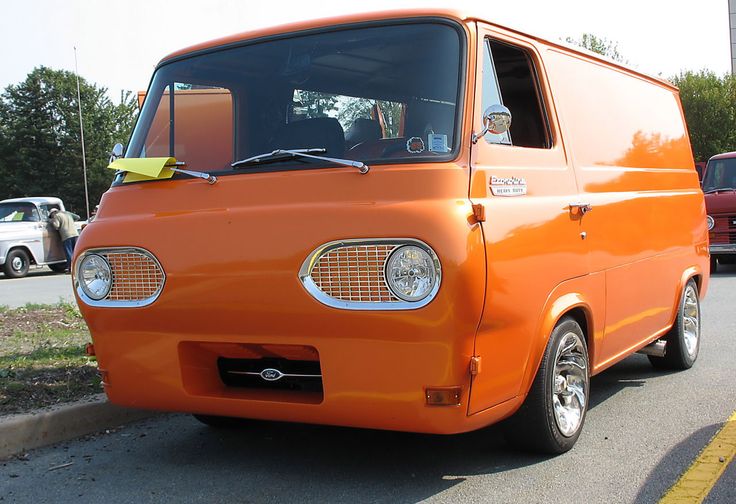
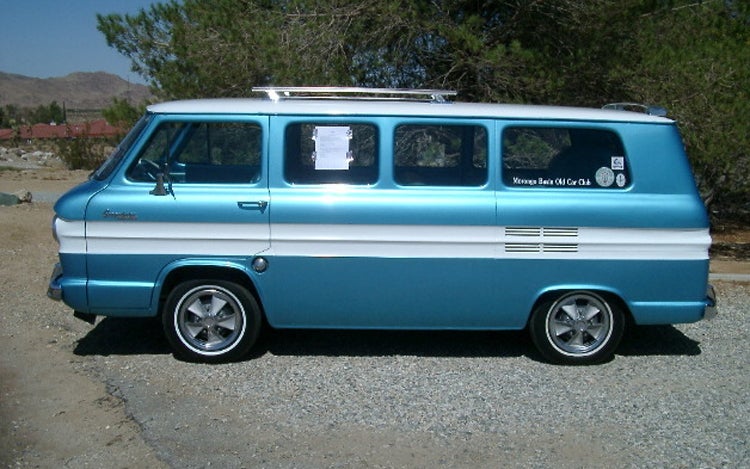
Iím not sure I get your point - cars need to function for their intended purpose, and while Ďgreat handlingí is awesome, being able to carry stuff without having to lift it 3í off the ground, having head room, and not having a 250 degree heater in the middle of your car kind of blow your entire premise out of the water. Not everyone can have a manual, brown, diesel, station wagon Miata.
 scottcjordan
> Bytemite
scottcjordan
> Bytemite
05/30/2015 at 11:13 |
|
Ralph Nader kinda salted the field for rear-engine cars. But a few stalwarts of rationality thumb their noses at cranky old Ralph today, such as the Smart ForTwo and Tesla Model S.
A greater mystery to me is all todayís front-wheel-drive designs hang the engine and transmission in front of the front wheels. This makes for long front overhangs that look totally awful, with a great honking schnoz and a puny wheelbase. Designers attempt to camouflage this in various ways, but inspect most FWD cars from the side today and the proportions are totally off.
Turn the transaxle 180 degrees to put the engine and transmission behind the front wheels, and the wheels could be pushed to the front of the car where they belong. Youíd not only improve driving dynamics but also improve sloped-driveway compatibility and reduce repair costs from low to moderate collisions. Serviceability and turn-radius might pose challenges but can be addressed readily enough. And the resulting car would be much sleeker without a huge pendulous overhang projecting way past the front axles.
 Berang
> Prophet of hoon
Berang
> Prophet of hoon
05/30/2015 at 11:13 |
|
Great handling was not actually the reason brass-era cars used a mid mounted engine, and packaging issues killed it off, both things which are touched on in the post. The point was basically that before the mid-mounted engine became popular for sporty reasons, it was popular for a different set of reasons - primarily because it allowed simple transmission of power to the wheels.
 Rev Les Crowley
> Bytemite
Rev Les Crowley
> Bytemite
05/30/2015 at 11:44 |
|
Probably because the Mini was so successful. FWD has traction advantages in snow and mud, too.
 Rev Les Crowley
> rudyH
Rev Les Crowley
> rudyH
05/30/2015 at 11:51 |
|
Exactly - itís an abbreviation of ďautomatic carriage.Ē
 Atomic Buffalo
> Bytemite
Atomic Buffalo
> Bytemite
05/30/2015 at 12:16 |
|
GM was still smarting from the Corvair fiasco. FF was an easier sell.
The Austin Mini demonstrated how good FF could be. And by the 70s (outside the US) several other manufacturers had adopted it.
The most complicated part of a carís packaging and integration is the firewall. A FF car is much more like a FR car with respect to the firewall. More of the existing engineering and experience is directly applicable. FF also keeps engine packaging separate from passenger packaging.
Consider how easy it is to adapt a FF design to a hatchback, station wagon or van. No impact to the mechanicals.
 Diztrakted
> Bytemite
Diztrakted
> Bytemite
05/30/2015 at 15:05 |
|
Actually, 4wd is a LOT better option for nicer electric cars and I would not be surprised if most mid-high end electrics in 40 years all have one motor per wheel. With how advanced traction control is getting, the ability to spin each wheel at exactly the required speed with the reaction speed of a magneteorheologic suspension system will blow everything else out of the water.
On the lower end, I would not be at all surprised if RR took over. Think of the weight savings! No need to overengineer all those front suspension parts and so many better packaging options. For example you could carry a cell up front for weight balance or go the Deltawing route and lower the front weight/wheel loading to make an ultracompact.
It will indeed be an interesting world. Hereís hoping that with the major manufacturers putting their engineering efforts into electric we actually get some creativiry in design.
 05SSSC
> Bytemite
05SSSC
> Bytemite
05/30/2015 at 16:49 |
|
Itís harder to hoon RR
 StenchOfABurner2
> matt.mara
StenchOfABurner2
> matt.mara
05/30/2015 at 17:41 |
|
What is that? Looks terrific!
 Bytemite
> Eezep
Bytemite
> Eezep
05/30/2015 at 18:23 |
|
Would RR handle that much different compared to MR if the engine was a small passenger car engine and the rest of the car wasnít race-car light? I can see modern RR cars using small, lightweight turbo engines to lower the ass weight while at the same time, having a bunch of amenities and safety weight near the front.
 Bytemite
> Fuel_of_Satan
Bytemite
> Fuel_of_Satan
05/30/2015 at 18:26 |
|
But that was not an original MR layout...it was just moved there. The cars Im suggesting would be RR, like the Beetle and the 911.
Low center of gravity engine like a flat 4-6, would allow back seats and a trunk AND a frunk.
 Bytemite
> scottcjordan
Bytemite
> scottcjordan
05/30/2015 at 18:31 |
|
I hate heavy front overhangs. And the fact that for so many cars, the entire engine sits on the overhang of the vehicle makes me shake my head.
I think this used to not be the case until Chrysler came along with their stupid cab-forward design. After that, all normal passenger cars have been driving the engine forward, and elongating the cabin. Even other opponauts have defended the FF layout because they are so used to seeing this kind of blatant bad engineering for the sake of cabin room.
 Fuel_of_Satan
> Bytemite
Fuel_of_Satan
> Bytemite
05/30/2015 at 19:44 |
|
The 911 gets pass as one of the supercars I mentioned, itís just too low. The Beetle had a very space consuming suspension system up front, later modified to a less space consuming version which helped a lot.
The was Clio of course an afterthought and the last thing on their mind was frunk space. Itís a little surprising thereís a plastic tub in there for stuff at all. But the point is that there is a huge amount of space up there, particularly if they streamline placements of components like brake cylinders and not just leave it as it was.
I havenít studied the new Twingo very closely, but considering they have skipped the whole frunk business and basically just made a sliding cover barely exposing the caps for your fluid top-ups, I canít help but think thereís a lot of wasted space in that front end.
 matt.mara
> StenchOfABurner2
matt.mara
> StenchOfABurner2
05/30/2015 at 20:59 |
|
Itís from the episode (series 10, episode 8) where Clarkson and May attempted to find the first ďmodernĒ car (that is, a car with what we consider standard controls).
Clearly, this was not that car...but itís a fantastically funny gif.
 Uel_the_Mule
> Berang
Uel_the_Mule
> Berang
05/30/2015 at 21:19 |
|
Great article, but I fail to see how ďAutocarĒ is a redundant name.
 Eezep
> Fuel_of_Satan
Eezep
> Fuel_of_Satan
05/30/2015 at 22:25 |
|
Thatís where gas lives when the engine is in the back.
 Berang
> Uel_the_Mule
Berang
> Uel_the_Mule
05/31/2015 at 02:06 |
|
I was making a joke since ďautoĒ and ďcarĒ by themselves are used to refer to the same thing. Donít take it too seriously.
 RadioRadio
> Fuel_of_Satan
RadioRadio
> Fuel_of_Satan
05/31/2015 at 04:22 |
|
Another point against it. Frunk is a profoundly stupid word.
 Fuel_of_Satan
> RadioRadio
Fuel_of_Satan
> RadioRadio
05/31/2015 at 05:23 |
|
It is. Which is why I like it so much. It's sort of a one word joke.
 matt.mara
> Prophet of hoon
matt.mara
> Prophet of hoon
05/31/2015 at 05:31 |
|
Also mid-engined:
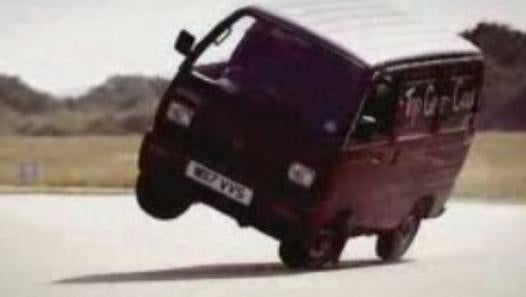
 Berang
> scottcjordan
Berang
> scottcjordan
05/31/2015 at 09:59 |
|
This is how they packaged it in the Renault Le Car (and well many other Renaults). If you look at the LeCar/R5 the front wheels are pushed to extreme front, which does make for a very nice riding and maneuverable car. But it also leads to less tractive effort and the engine intruded into the cabin footwell somewhat. Those are probably the two main reasons that layout is no longer seen in cars.
 Mr.Li
> Berang
Mr.Li
> Berang
06/01/2015 at 09:47 |
|
Front engine is inherently stable, mid/rear is not. Front weight bias and front drive and smaller front tires and all that is all a stability effort, understeer is the only safe way to operate a vehicle, ditto for planes, non engineers donít seem to understand this, and cars are safest in head on crashes (might be a chicken and egg situation though)
edit: Jalponik needs some vehicle dynamics education, lots of misinformation in the comments